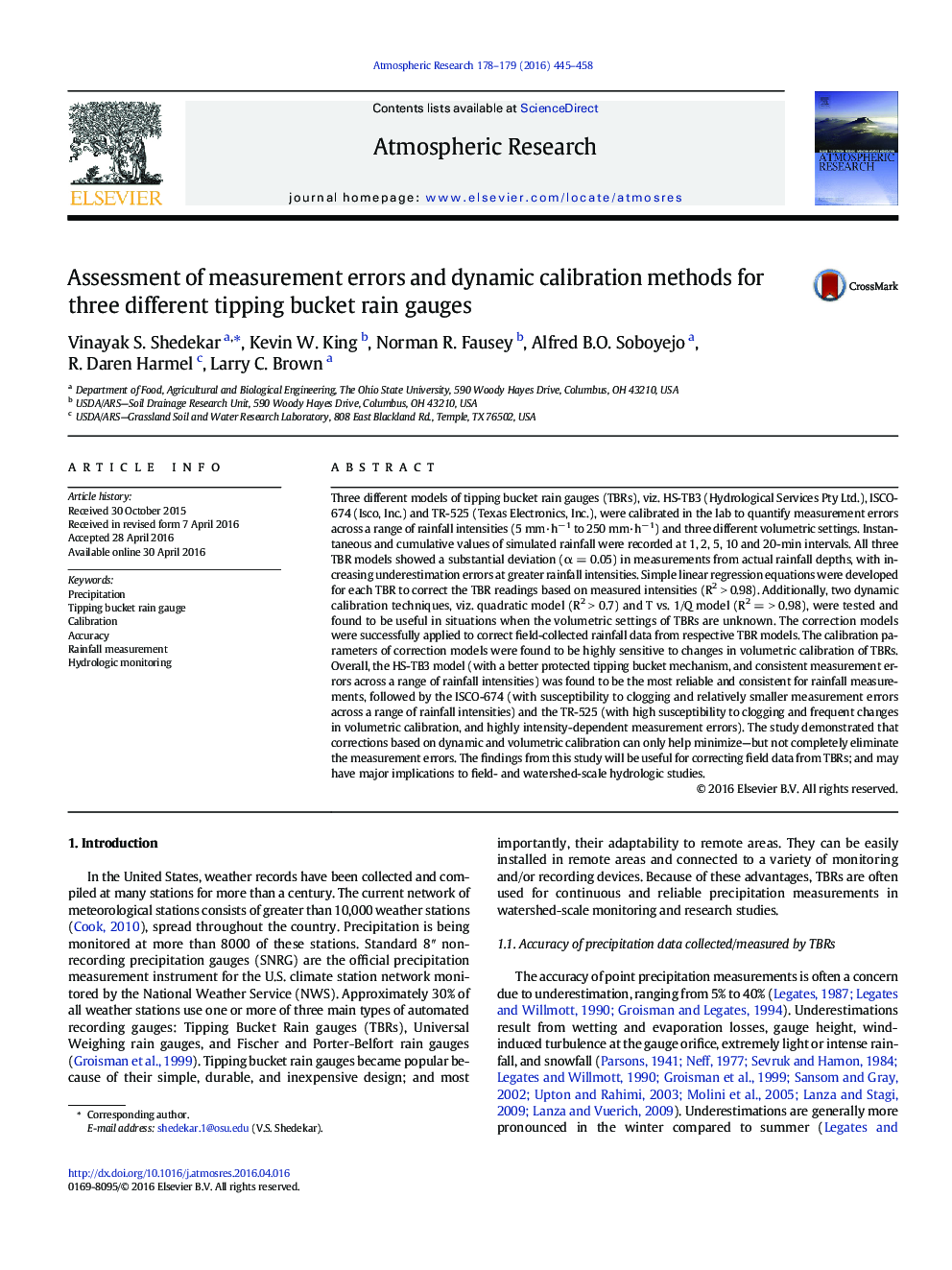| Article ID | Journal | Published Year | Pages | File Type |
|---|---|---|---|---|
| 6343032 | Atmospheric Research | 2016 | 14 Pages |
Abstract
Three different models of tipping bucket rain gauges (TBRs), viz. HS-TB3 (Hydrological Services Pty Ltd.), ISCO-674 (Isco, Inc.) and TR-525 (Texas Electronics, Inc.), were calibrated in the lab to quantify measurement errors across a range of rainfall intensities (5 mm·hâ 1 to 250 mm·hâ 1) and three different volumetric settings. Instantaneous and cumulative values of simulated rainfall were recorded at 1, 2, 5, 10 and 20-min intervals. All three TBR models showed a substantial deviation (α = 0.05) in measurements from actual rainfall depths, with increasing underestimation errors at greater rainfall intensities. Simple linear regression equations were developed for each TBR to correct the TBR readings based on measured intensities (R2 > 0.98). Additionally, two dynamic calibration techniques, viz. quadratic model (R2 > 0.7) and T vs. 1/Q model (R2 = > 0.98), were tested and found to be useful in situations when the volumetric settings of TBRs are unknown. The correction models were successfully applied to correct field-collected rainfall data from respective TBR models. The calibration parameters of correction models were found to be highly sensitive to changes in volumetric calibration of TBRs. Overall, the HS-TB3 model (with a better protected tipping bucket mechanism, and consistent measurement errors across a range of rainfall intensities) was found to be the most reliable and consistent for rainfall measurements, followed by the ISCO-674 (with susceptibility to clogging and relatively smaller measurement errors across a range of rainfall intensities) and the TR-525 (with high susceptibility to clogging and frequent changes in volumetric calibration, and highly intensity-dependent measurement errors). The study demonstrated that corrections based on dynamic and volumetric calibration can only help minimize-but not completely eliminate the measurement errors. The findings from this study will be useful for correcting field data from TBRs; and may have major implications to field- and watershed-scale hydrologic studies.
Related Topics
Physical Sciences and Engineering
Earth and Planetary Sciences
Atmospheric Science
Authors
Vinayak S. Shedekar, Kevin W. King, Norman R. Fausey, Alfred B.O. Soboyejo, R. Daren Harmel, Larry C. Brown,
